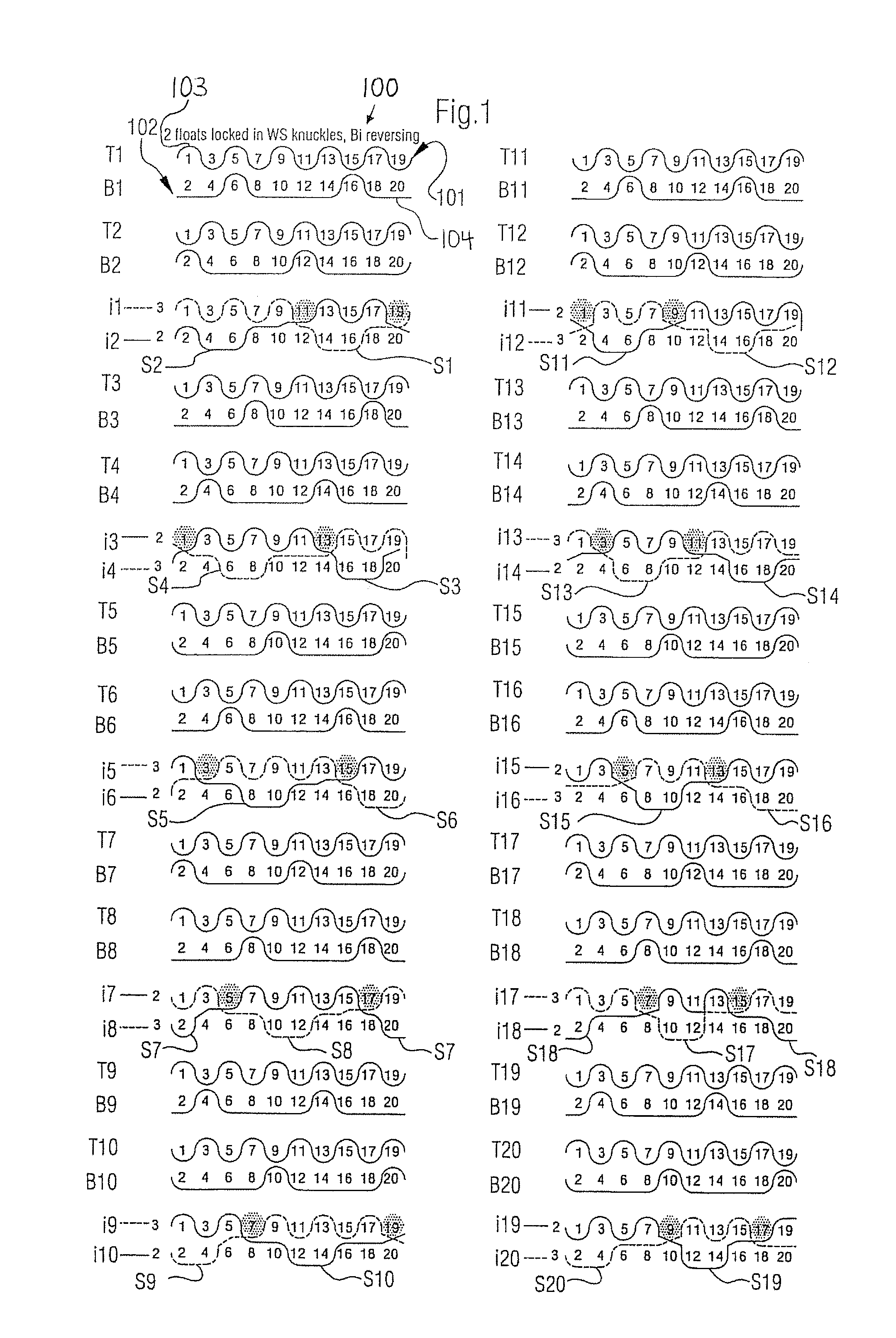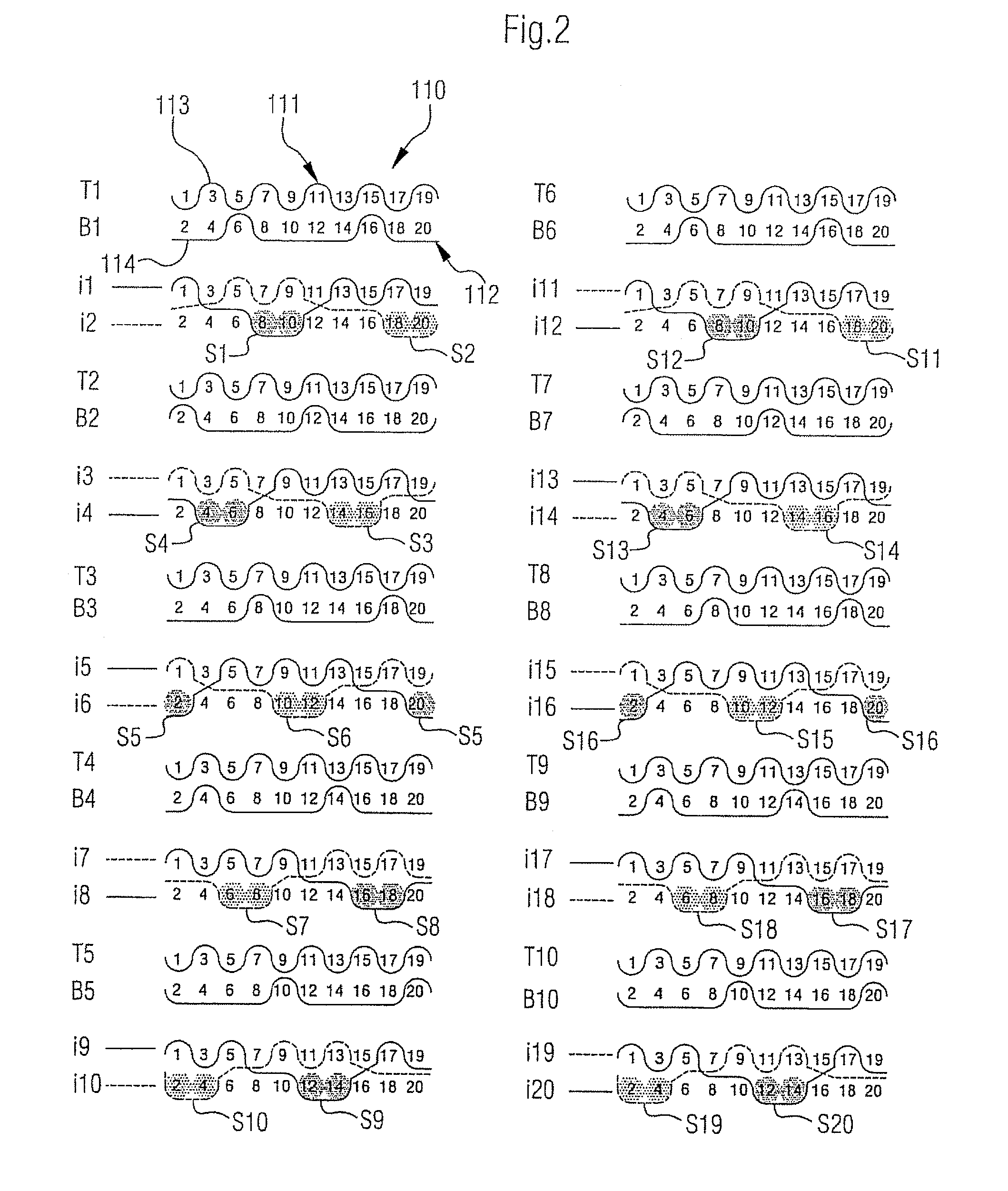Forming mesh
a mesh and mesh technology, applied in the field of paper machine mesh, can solve the problems of reducing affecting the flatness of the mesh, and carrying a lot of water, so as to reduce the risk of delamination of the two fabric layers, reduce the thickness of the mesh and the disadvantages connected therewith, and the effect of a larger cross-section
- Summary
- Abstract
- Description
- Claims
- Application Information
AI Technical Summary
Benefits of technology
Problems solved by technology
Method used
Image
Examples
first embodiment
[0029]Referring now to the drawings, and more particularly to FIG. 1, there is shown, in the transverse thread direction, an inventive paper machine mesh 100 constructed as a forming mesh. In the representation in FIG. 1 there is shown a repeat unit of the weave structure of the mesh 100.
[0030]The forming mesh 100 has upper longitudinal threads 1,3,5,7,9,11,13,15,17 and 19 constructed as warp threads and lower longitudinal threads 2,4,6,8,10,12,14,16,18 and 20 constructed as warp threads. The longitudinal threads extend in this case perpendicularly from the drawing plane of FIG. 1.
[0031]Furthermore, the forming mesh 100 has binder threads it to i20 which are arranged in binder thread pairs it and i2, i3 and i4 to i19 and i20.
[0032]Also, the forming mesh 100 has upper transverse threads T1 to T20 constructed as weft threads and lower transverse threads B1 to B20 constructed as weft threads. On the forming mesh 100 presented in FIG. 1, the ratio of the number of binder thread pairs it...
second embodiment
[0056]FIG. 2 shows an inventive paper machine mesh 110 constructed as a forming mesh.
[0057]The mesh 110 presented in FIG. 2 differs essentially from the forming mesh 100 presented in FIG. 1 in that the ratio of the number of binder thread pairs i1 and i2 to i19 and i20 and upper transverse threads T1 to T10 together to the number of lower transverse threads B1 to B10 is 2:1. Mesh 100 includes the outer side 113 of the upper fabric layer 111 and the outer side 114 of the lower fabric layer 112.
[0058]Furthermore, tie segments formed by binder threads of the same kind from directly adjacent binder thread pairs are—unlike in FIG. 1—directly adjacent each other in the transverse thread direction. This means that for example the binder threads of a first kind i2, i3, i6, i7, i10, i11, i14, i15, i18 and i19 form together with the corresponding lower transverse threads the tie segments S2, S3, S6, S7, S10, S11, S14, S15, S18 and S19, whereby for example the tie segments S2 and S3, which are...
PUM
 Login to View More
Login to View More Abstract
Description
Claims
Application Information
 Login to View More
Login to View More - R&D
- Intellectual Property
- Life Sciences
- Materials
- Tech Scout
- Unparalleled Data Quality
- Higher Quality Content
- 60% Fewer Hallucinations
Browse by: Latest US Patents, China's latest patents, Technical Efficacy Thesaurus, Application Domain, Technology Topic, Popular Technical Reports.
© 2025 PatSnap. All rights reserved.Legal|Privacy policy|Modern Slavery Act Transparency Statement|Sitemap|About US| Contact US: help@patsnap.com



